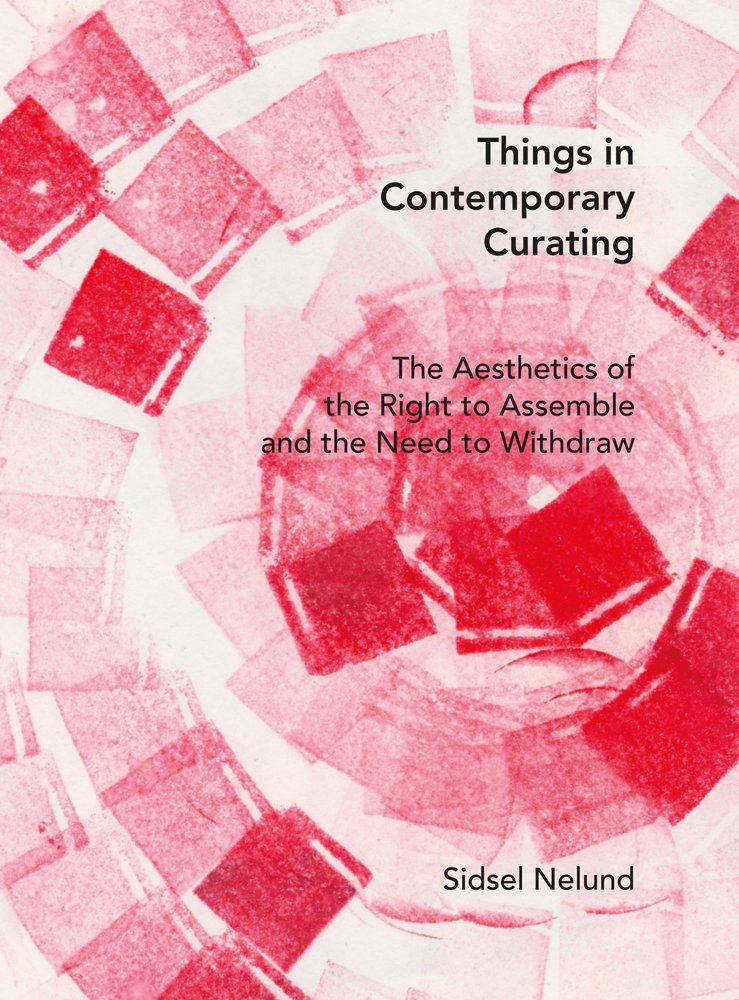 Image 1 of
Image 1 of


Things in Contemporary Curating
Through close readings of key exhibitions, Things in Contemporary Curating: The Aesthetics of the Right to Assemble and the Need to Withdraw develops a new aesthetic, an ‘aesthetics of the thing’. Here the word ‘thing’ is understood in its original meaning, namely as an object, a form of political gathering, and a topic. It encompasses exhibitions that use democratic meetings as a curatorial approach, and asks, If the exhibition space were a space for democratic gatherings, how would it look?
The roots of this contemporary tendency ‘aesthetics of the thing’ are traced back, through an international historical gaze, to the organisation of exhibitions as alliance and solidarity-shaping events in the postwar era. Nelund shows how this development found its way into European and North American exhibition practices from the 1990s on, and is now integrated in the exhibition practices of places such as Haus der Kulturen der Welt in Berlin and MoMA in New York.
The book offers ethnographic journeys into exhibitions such as Home Works Forum in Beirut, The Anthropocene Project in Berlin, Parliament of Bodies during Documenta 14, and Tricia Hersey’s The Nap Ministry in Atlanta. Via these participatory experiences, it becomes clear that the exhibitions shine by making space for differences and disagreements, and Nelund therefore appeals to the reader to ask, In spite of differences, what can we do together that we can’t do alone? And how?
Softcover, flexbind
228 pages
Full colour diagrams
Through close readings of key exhibitions, Things in Contemporary Curating: The Aesthetics of the Right to Assemble and the Need to Withdraw develops a new aesthetic, an ‘aesthetics of the thing’. Here the word ‘thing’ is understood in its original meaning, namely as an object, a form of political gathering, and a topic. It encompasses exhibitions that use democratic meetings as a curatorial approach, and asks, If the exhibition space were a space for democratic gatherings, how would it look?
The roots of this contemporary tendency ‘aesthetics of the thing’ are traced back, through an international historical gaze, to the organisation of exhibitions as alliance and solidarity-shaping events in the postwar era. Nelund shows how this development found its way into European and North American exhibition practices from the 1990s on, and is now integrated in the exhibition practices of places such as Haus der Kulturen der Welt in Berlin and MoMA in New York.
The book offers ethnographic journeys into exhibitions such as Home Works Forum in Beirut, The Anthropocene Project in Berlin, Parliament of Bodies during Documenta 14, and Tricia Hersey’s The Nap Ministry in Atlanta. Via these participatory experiences, it becomes clear that the exhibitions shine by making space for differences and disagreements, and Nelund therefore appeals to the reader to ask, In spite of differences, what can we do together that we can’t do alone? And how?
Softcover, flexbind
228 pages
Full colour diagrams
Through close readings of key exhibitions, Things in Contemporary Curating: The Aesthetics of the Right to Assemble and the Need to Withdraw develops a new aesthetic, an ‘aesthetics of the thing’. Here the word ‘thing’ is understood in its original meaning, namely as an object, a form of political gathering, and a topic. It encompasses exhibitions that use democratic meetings as a curatorial approach, and asks, If the exhibition space were a space for democratic gatherings, how would it look?
The roots of this contemporary tendency ‘aesthetics of the thing’ are traced back, through an international historical gaze, to the organisation of exhibitions as alliance and solidarity-shaping events in the postwar era. Nelund shows how this development found its way into European and North American exhibition practices from the 1990s on, and is now integrated in the exhibition practices of places such as Haus der Kulturen der Welt in Berlin and MoMA in New York.
The book offers ethnographic journeys into exhibitions such as Home Works Forum in Beirut, The Anthropocene Project in Berlin, Parliament of Bodies during Documenta 14, and Tricia Hersey’s The Nap Ministry in Atlanta. Via these participatory experiences, it becomes clear that the exhibitions shine by making space for differences and disagreements, and Nelund therefore appeals to the reader to ask, In spite of differences, what can we do together that we can’t do alone? And how?
Softcover, flexbind
228 pages
Full colour diagrams
